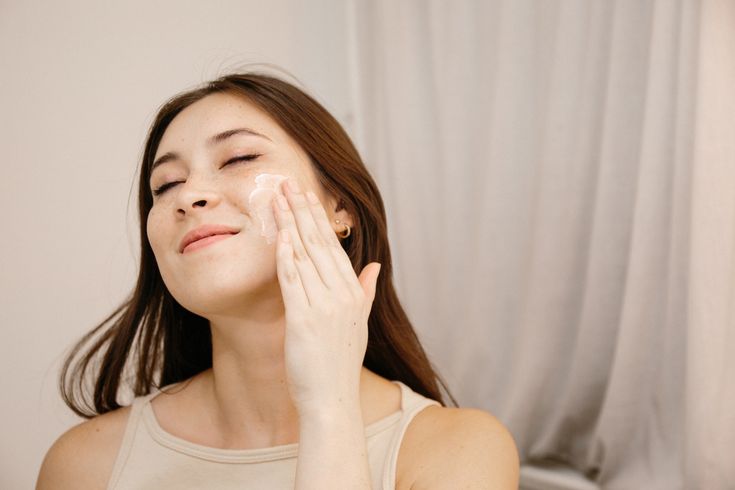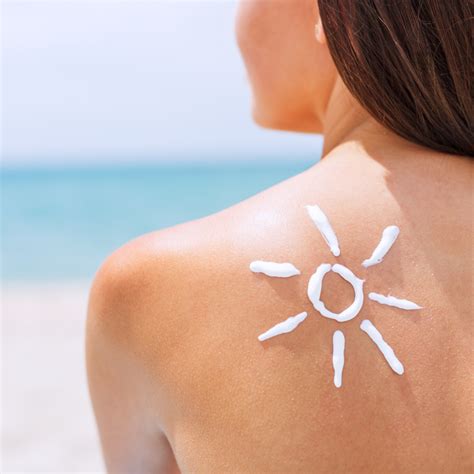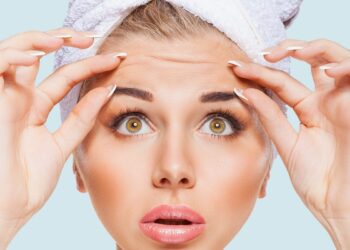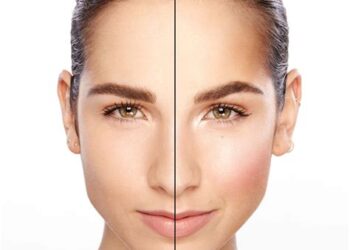In the vast and often confusing world of skincare, trends come and go. We’re constantly bombarded with “miracle” ingredients and complex, multi-step routines. But what if the secret to healthy, radiant, and resilient skin wasn’t about adding more, but about focusing on one fundamental element? Enter the skin barrier. Increasingly, dermatologists and skincare experts agree that prioritizing the health of this vital protective layer is the single most important thing you can do for your skin. If you’re struggling with issues like persistent redness, irritation, sensitivity, or dryness, chances are your skin barrier is compromised and sending out an SOS.
Understanding and nurturing your skin barrier is not just another trend; it’s a foundational skincare philosophy that shifts the focus from temporary fixes to long-term, sustainable health. It’s about working with your skin, not against it. A healthy, functioning barrier is the key to solving a myriad of skin concerns, creating a complexion that doesn’t just look good, but is genuinely strong and healthy from the inside out.
This comprehensive guide will explore everything you need to know about skin barrier repair. We’ll dive deep into what the skin barrier is, how to recognize the signs of damage, the common culprits that weaken it, and, most importantly, provide a strategic, step-by-step plan to restore, strengthen, and protect this crucial component of your skin.
What Exactly Is the Skin Barrier?
To understand how to fix it, you first need to understand what it is. Imagine your skin is a brick wall. This is the most common and effective analogy used by dermatologists.
- The bricks are the skin cells, called corneocytes. These are tough, dead skin cells that provide the main structure.
- The mortar holding these bricks together is a complex mixture of lipids (fats). This lipid matrix is composed of ceramides, cholesterol, and free fatty acids.
This “brick-and-mortar” structure is scientifically known as the stratum corneum, the outermost layer of your skin. This layer, along with the acid mantle—a very thin, slightly acidic film on the surface—forms your skin’s primary protective barrier.
The skin barrier has two critical functions:
A. It Keeps the Good Stuff In: A healthy barrier is crucial for locking in moisture and preventing Transepidermal Water Loss (TEWL). When the barrier is intact, it ensures your skin stays hydrated, plump, and supple from within.
B. It Keeps the Bad Stuff Out: Your barrier is your body’s first line of defense against the outside world. It shields your deeper skin layers from environmental aggressors like pollution, UV radiation, harsh weather, and harmful bacteria or allergens.
When this barrier is compromised—when the “mortar” starts to break down and “bricks” become disorganized—your skin’s defense system is weakened, leading to a cascade of problems.
Signs Your Skin Barrier Is Damaged
A compromised skin barrier can manifest in ways that are often misdiagnosed as other conditions. If you’re experiencing any of the following, your barrier might be the root cause:
- Increased Sensitivity and Reactivity: Products that you’ve used for years might suddenly start to sting, burn, or cause redness. Your skin may feel generally intolerant to almost anything you apply.
- Persistent Redness and Inflammation: A damaged barrier allows irritants to penetrate more easily, triggering an inflammatory response. This can look like blotchy, red patches or a generally flushed appearance.
- Chronic Dryness and Dehydration: If your skin feels constantly tight, flaky, or rough, no matter how much moisturizer you apply, it’s a classic sign of high TEWL due to a faulty barrier. Your skin simply can’t hold on to moisture.
- Itchiness or a Stinging Sensation: When the protective lipid layer is stripped, nerve endings in the skin can become more exposed and easily irritated, leading to sensations of itching or stinging.
- Breakouts and Acne: While often associated with oily skin, acne can be a sign of a damaged barrier. When the barrier is impaired, the skin can become more susceptible to acne-causing bacteria. Furthermore, the skin might overproduce oil to compensate for dehydration, leading to clogged pores.
- Dullness: Healthy, hydrated skin reflects light. Dehydrated skin from a compromised barrier scatters light, leading to a dull, lackluster appearance.
The Top Culprits: What Damages the Skin Barrier?

Understanding what causes the damage is the first step toward fixing it. More often than not, the damage is self-inflicted through a well-intentioned but misguided skincare routine.
A. Over-Exfoliation: This is arguably the number one cause of barrier damage in the modern skincare era. The obsession with achieving a “smooth” texture has led to the overuse of powerful chemical exfoliants (like AHAs and BHAs) and physical scrubs. Exfoliating too often, or with products that are too strong, literally scrubs away the protective lipid mortar and cellular bricks of your stratum corneum.
B. Harsh Cleansers: Cleansers that are too alkaline (high pH) or contain harsh surfactants like Sodium Lauryl Sulfate (SLS) can strip the skin of its natural oils. That “squeaky clean” feeling is actually a sign that you’ve compromised your acid mantle and lipid barrier.
C. Using Too Many Active Ingredients: A routine packed with high concentrations of Vitamin C, retinoids, exfoliating acids, and other potent actives can overwhelm your skin. This chemical overload can lead to chronic inflammation and a breakdown of your skin’s natural defenses.
D. Environmental Factors: External stressors play a significant role. Prolonged exposure to UV radiation, harsh winds, low humidity (like in heated or air-conditioned rooms), and environmental pollution all put a strain on your skin barrier.
E. Lifestyle and Internal Factors: Chronic stress, lack of sleep, and poor nutrition can all impact your skin’s ability to repair and maintain itself. Stress, in particular, elevates cortisol levels, which has been shown to degrade barrier function over time.
F. Hot Water: Washing your face or taking long, hot showers can emulsify and wash away the essential lipids in your skin, leaving it feeling dry and vulnerable.
The Barrier Repair Blueprint: Your Step-by-Step Recovery Plan
Repairing a damaged skin barrier requires patience and a “less is more” approach. The goal is to remove all potential irritants and flood the skin with the building blocks it needs to heal itself.
Phase 1: The Stripping Down (1-2 Weeks)
The first step is to go on a “skin diet.” You need to eliminate everything that could be contributing to the problem.
- Stop All Exfoliation: Immediately cease the use of all physical scrubs, exfoliating acids (glycolic, lactic, salicylic), and retinoids. Your skin is wounded, and these will only cause further injury.
- Pause Potent Actives: Shelve your high-concentration Vitamin C serums, peptide treatments, or any other targeted serums for now.
- Adopt a Minimalist Routine: Your entire routine should consist of just three simple steps:
- A gentle, hydrating cleanser.
- A barrier-repairing moisturizer.
- A broad-spectrum sunscreen in the morning.
Phase 2: Rebuilding and Nourishing (Ongoing)
Once you’ve removed the offenders, you can focus on actively rebuilding your barrier with the right ingredients and products.
A. Cleanse Gently: Switch to a pH-balanced, creamy, or milky cleanser that is free of sulfates. The goal is to clean your skin without stripping it. Look for cleansers with soothing ingredients like Centella Asiatica (Cica) or oat extracts.
B. Choose Your Moisturizer Wisely: This is the most important product in your repair journey. Your moisturizer should be rich in barrier-supportive ingredients. Look for products containing the three key components of the lipid matrix: * Ceramides: These are the superstar ingredients for barrier repair. They are literally the lipids that make up over 50% of your skin’s mortar. Adding them topically helps to replenish what’s been lost. * Cholesterol: A crucial lipid that works in synergy with ceramides to improve skin elasticity and barrier function. * Fatty Acids: Ingredients like linoleic acid and linolenic acid help maintain the skin’s lipid structure and reduce inflammation.
C. Incorporate Hydrating and Soothing Ingredients: Look for these in your serums (once you reintroduce them) and moisturizers: * Hyaluronic Acid: A humectant that draws water into the skin, helping to keep it hydrated. * Glycerin: Another effective humectant that helps the skin hold on to moisture. * Niacinamide (Vitamin B3): A multi-tasking wonder that is proven to boost ceramide production within the skin, reduce inflammation, and improve barrier function. * Panthenol (Vitamin B5): A soothing and hydrating ingredient that helps to reduce redness and support skin healing. * Centella Asiatica (Cica): Known for its incredible wound-healing and anti-inflammatory properties, making it perfect for calming irritated skin.
D. Sunscreen is Non-Negotiable: UV radiation is one of the biggest threats to your skin barrier. You must apply a broad-spectrum sunscreen with an SPF of 30 or higher every single day, without exception. Mineral sunscreens containing zinc oxide or titanium dioxide are often better tolerated by sensitized skin.
Phase 3: The Slow Reintroduction
After 3-4 weeks of a consistent, gentle routine, you should notice a significant reduction in redness, sensitivity, and dryness. Your skin should feel more comfortable and resilient. Only then can you slowly and cautiously reintroduce other products.
- Introduce one product at a time. Wait at least two weeks before adding another to see how your skin reacts.
- Start with lower concentrations. If you were using a high-strength retinoid, re-start with a gentle, introductory-level product.
- Reduce the frequency. Don’t go back to exfoliating daily. Start with a gentle exfoliant just once or twice a week and see how your skin tolerates it.
A Lifelong Commitment to Skin Health

Repairing your skin barrier is a journey, not a destination. It requires you to unlearn aggressive skincare habits and instead learn to listen to your skin’s needs. By shifting your focus from chasing fleeting trends to building a strong, resilient foundation, you will be rewarded with skin that is not only calm and clear but also fundamentally healthy. A strong barrier is the ultimate anti-aging secret, the ultimate acne solution, and the true key to a radiant, glowing complexion that lasts a lifetime.









